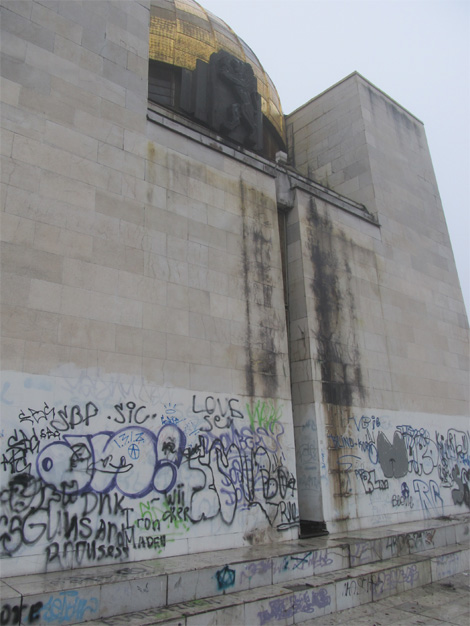Summer is gone, autumn is here, but the weather is still clement enough for taking walks around the city. If we do that, there is one thing that cannot possibly escape our attention – the words and the comic-book characters splashed all over the walls of houses by an anonymous hand, comfortably hidden behind a pseudonym.
 Graffiti art came into being in New York in the 1980s as a form of street art, of rebellion against the system of rules and certain policies. From the very outset, graffiti artists have been prosecuted, as, by and large, the public considers what they are doing to be vandalism. Scribbling on walls is a blemish, a blot on their original appearance. There is some graffiti, however, that is an exception and is even considered to be a work of art. The well-drawn graffiti is eye-catching, even to people who loathe this art form. Many European cities have space designated specifically for graffiti artists to use, provided they confine themselves to it. Any attempt to draw their graffiti in any other parts of the city entails hefty fines.
Graffiti art came into being in New York in the 1980s as a form of street art, of rebellion against the system of rules and certain policies. From the very outset, graffiti artists have been prosecuted, as, by and large, the public considers what they are doing to be vandalism. Scribbling on walls is a blemish, a blot on their original appearance. There is some graffiti, however, that is an exception and is even considered to be a work of art. The well-drawn graffiti is eye-catching, even to people who loathe this art form. Many European cities have space designated specifically for graffiti artists to use, provided they confine themselves to it. Any attempt to draw their graffiti in any other parts of the city entails hefty fines.
So, the question springs to mind: why is it that there are no such spaces in every Bulgarian town and why aren’t all other scribbles and scrawls – removed? The steps Sofia municipality is taking in this direction is no solution to the problem, as they only address the consequences. Because of the growing number of complaints by the public, city council is planning to install CCTV surveillance systems to stop the culprits. The fines will range from 100 to 2,500 Leva and will be applied even people aged under 16, as they too are subject to criminal liability, as long as they comprehend what they have done. But the battle against graffiti is not the only one Sofia municipality is launching – it is also taking up arms against advertisement and notice hoarding all over the city. The reason – the insufficient number of advertisement columns.
Adapted by Yoan Kolev from Dnes.bg
English version: Milena Daynova
Photos: BGNESThe monument to the Bulgarian alphabet, created by Bulgarian artist Bronislav Likomanov , has arrived in Los Angeles, where it will be installed. The Consulate General of Bulgaria in Los Angeles, USA, announced this on its Facebook page. The mission..
Over the next few months, there will be three events dedicated to the famous Busintsi ceramics in Sofia, Burgas and Ihtiman. There will be ceramics and pottery workshops and educational lectures on the Busintsi Ceramics tradition. As part of the..
Nearly 80% of the population of the Moldovan city of Taraclia are ethnic Bulgarians. Historically, the city was founded in the early 19th century by Bulgarian settlers as a result of the series of Russo-Turkish wars. The current mayor of the city,..

+359 2 9336 661
